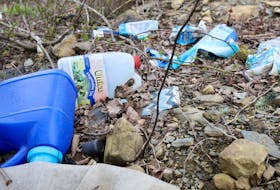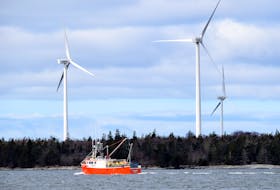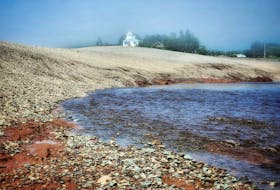“Like any garden you have to look after it,” The minister of the Nova Scotia Department of Natural Resources said Thursday while stopped in New Glasgow for a presentation to the Pictou County Chamber of Commerce.
“Like any garden you have to look after it,” The minister of the Nova Scotia Department of Natural Resources said Thursday while stopped in New Glasgow for a presentation to the Pictou County Chamber of Commerce.
The difference, though, between a vegetable garden and the massive forest the DNR manages is that harvesting isn’t something that’s looked at over a period of a few months but rather on a 40- to 100-year cycle, he said.
That’s why it requires careful management and a balance of preservation and economic stimulus.
“It’s very valuable property. You have to ask yourself, is all of that property enjoying its highest and best use under the tenureship of the Crown or is there other uses we could put that too? Maybe not traditional uses?”
Alternative uses
Currently the main use for Crown land is forestry. As minister of Natural Resources, he said he’s been given a mandate from the premier to unlock the potential and is looking for ways to best use the provincially owned land.
One alternate use currently being investigated in the province is to use Crown land to help industrialize the maple syrup industry in the province.
Historically maple syrup has been approached as a nice sign of spring but not viewed as closely as a business prospect in Nova Scotia, but in places like Quebec where 70 per cent of the world’s maple syrup is produced, it’s big business.
“There are movements or stirrings in Nova Scotia that I’m aware of that would take maple to a more industrial style of manufacturing, creating jobs and extend the export markets. Some of that may involve the maple stands the Crown has.”
Hines said the market is strong for maple syrup and gave as an example the Nova Scotia-based business, PURE, which sells infused maple syrup. They recently pitched their idea on Dragon’s Den.
“He’s somebody we’re working with,” Hines said. “We want to see if it’s viable for his operation.”
In recent years, the province has tried to make Crown land available to blueberry producers to lease, but have had a hard sell. Hines explained that because blueberries take a long time to get established, producers prefer to own rather than lease land.
The province is hesitant to put up any for sale signs on their property though.
“It really stems from the fact that Nova Scotia next to P.E.I. has the smallest percentage of Crown land. The prevailing policy has been not to part with it, but we have to look at every policy we have and see if it fits the current opportunity that we’re faced with in the process. I think we need to be looking at what the highest and best use is for those lands and can that be used to stimulate the economy.”
Sustainability
Currently in Nova Scotia only one per cent of the forest is harvested each year. Of that about 23 per cent of the wood harvested comes from Crown land. The rest is all private land ownership.
“If you look at the regeneration and silviculture work going on, we’re satisfied we’re replanting and managing at a rate that is sustainable in terms of our total allowable cut.”
Forest facts
• Nearly 80 per cent of Nova Scotia is covered in forest
• There are 4.2 million hectares of forest in Nova Scotia
• There were $700 million worth of expectors of wood products and pulp and paper in 2015
• 11,500 jobs are created by the forestry industry
• 3.5 million trees were planted in Nova Scotia last year









